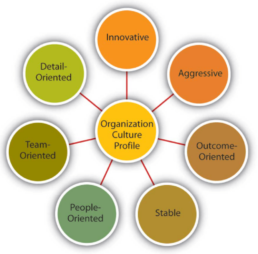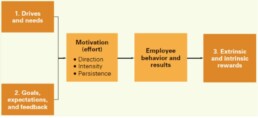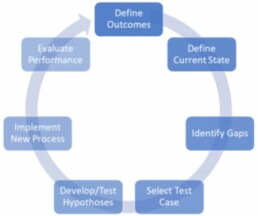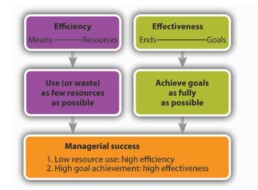A review article on using Business Value Oriented Delivery at Status Global as a flexible holistic approach to Team Growth and Project Success
By Rafael Moreira & Garima Goel
Abstract
Being a Global Technology Consulting firm, we are always focused in creating impactful results and empowering our clients to achieve more. With Technology, Solution and People as our three pillars of commitment and success, we strongly emphasize on BVOD.
The Business Value Oriented Delivery is a novel extension for Organization Management with focus on optimization and enhancing the Business Value of our Products and Services. We rely on adding value, attention and centralizing our efforts to the Organization Culture, team dynamics, client interactions, relationship between client and us, human resources and relations, work processes, employee interactions, attitude, skill, and maturity levels, reducing waste, knowledge harvesting, asset management, re-usability of our products, innovation, modernization, creativity and satisfaction of our end users and clients.
We as an Organization, believe in fostering a culture where our Team Members are proactive and aligned with the short-term and long-term goals of the company bringing higher levels of contribution, efficiency, productivity gains and shared responsibility of client deliverables. A culture of mutually evolving, growing and respectful team improving its personal and professional qualities, eliminating impediments on its own, optimizing processes, managing work, and removing waste in terms of time, effort, resources, communication wherever possible.
Every aspect of management at Stratus involving people, project, program, priorities, conflicts, resources, product, services, vendor has its prime attention to Business Value being driven and achieved.
Program Management at Stratus Global:
At Stratus, one of the core and crucial activities performed is to analyze project dependencies because the whole program and all projects are interconnected based on dependencies. We believe that knowing the dependencies between projects really helps various teams get the big picture and deliver business value with excellence. Planning and communication become easier, and it will make logical sense at an early stage in project development, so the Teams know where to focus their efforts. It’s also critical that project managers have an idea of where to look for the optimization of processes and increase the business value of projects. Our three sound fundamentals of work and adherence in this direction include – Knowledge Management, Asset Management and Cross- Skill Management of our Team Members.
We make sure that every slice of information and knowledge within Stratus is harvested and made accessible to our complete workforce for reference and re-utilization across projects using Confluence and SharePoint as our tools. Artifacts can include excel documents, word sheets, presentations, team recordings, tools, utilities etc. which are then preserved as Assets within our repository. This stimulates a culture of knowledge sharing between the team members, strongly encourages cross- communication and promotes productivity gains by applying existing references for a new Business Client. Team members do not hesitate to push technical suggestions and recommendations to Business Users which have been already tested and validated and are absolutely expected to work when implemented, in return reducing waste and channelizing efforts in other needed project areas and aspects.
We currently have approximately 50+ internally cultivated tools and assets which have been extensively utilized across projects reducing waste and delivering value to our client base.
We trust that cross-skilling or cross-training allows team members to pick up different mindsets, act as a better support system for other team members within the project or across projects and appreciate their challenges. It assists team members to help balance the workload, appreciate, and respect the contributions of the other team members and drive collaboration and decision-making choices that incorporate the various project perspectives.
Stratus, as an organization fosters that healthy and cross-functional teams lead more business value and avoid sprint fatigue maintaining the team velocity, cohesiveness, and motivation. >70% of our workforce across the shores is cross-skilled and trained which helps us drive dynamic client goals.
Prioritizing projects and milestones for realization by business value and dependencies by Stratus Global:
Based on the dependencies between projects and their business value, prioritization is the needed step to be performed carefully. Prioritization ensures clarity on the projects’ importance of implementation and requires planning, investment, and general focus. Along with the delivery of milestones which includes design phase-completion, test completion, product demonstration to consumers.
How Stratus Global Establishes people-and-business-oriented culture:
With our Business Value-Oriented Delivery Model, we are focused to develop a people-and-business-oriented culture in which everyone in the organization is perceived and treated as a human being and a business partner at the same time. The culture supports formal and friendly relations equally because this helps people to relate to each other openly and positively. At the same time, all responsibilities are taken seriously.
Our People-and-business-oriented culture includes:
- Treating everyone as a person and a business partner at the same time.
- Respecting others’ emotions, feelings, and peculiarities.
- Respecting others’ time and responsibilities.
- Accepting and following organizational strategies and missions.
- Business etiquette.
- Positive and supportive attitude.
The Company strongly aligns that this mutually evolving culture needs to be spread across all offices, departments, teams, individuals, and even to external interested parties that may need to understand it and align their interactions with the requirements. A culture of this kind that involves personal and business relations may not be easy to establish and understand and may need time and effort.
Aligning Employees with Stratus’ strategies at Stratus Global:
We are an organization of great people with diverse knowledge, expertise, skills, and personalities and the understanding of our organizational culture may depend on many factors like experience, skills, culture, age, or cognitive perceptions. Different employees may have different perceptions about us including priorities and processes. These differences may become a reason for conflicts, low motivation, productivity decline, information loss, and may cause delays in communication. Aligning the workforce, employees and team members with Stratus’ strategies may be considered as initial risk management but we know that Awareness, agreement, and commitment from the entire organization, offices, departments, teams, or individuals is essential for achieving the organizational goals and motivating our workforce achieve their respective goals. We perceive this as a symbiotic and mutually growing relationship and association where we as an organization ensure and support our employees to accomplish their aspirations while aligning with our Vision to assure optimal solutions are found, presented, and agreed upon.
Participation in decisions at Stratus Global:
Stratus participates in fast and reliable decisions making across different stages of project delivery and product development. Various individuals, teams, and external organizations may need answers to questions about every aspect of the project. A frequency of response and solutions may eliminate waste and speed up the work of entire team and organization. For efficient and swift decision making, we extensively rely on our well-prepared, trained and professionally knowledgeable team members and trust their judgement.
How Stratus Global performs Motivation Management:
Motivation is considered as a total result of someone’s perception, self-confidence, beliefs, emotions. Stratus participates in improving the perception and self-confidence of individuals and employees inside the organization, discusses beliefs, and supports individuals in managing their emotions. We understand that Motivation is a factor, which enhances work, speed, communication, and participation in activities. We may still need to train people or organize their activities, so the desired level of commitment can be achieved with time. All the project deliverables and Organizational goals are carried out by our employees and hence its extremely vital for us to spread a noticeable people-oriented culture, ensure Organizational stability, meaningful work with a general sense of stability and sense of purpose.
We take time and efforts to define clear responsibilities and realistic objectives for our workforce helping them attain professional and personal development, acknowledgment, and recognition. We gracefully conduct various motivational initiatives to reward our employees and announce their achievements. Every Leader of the company is expected to comply with positive management style and transparency. Stratus firmly accepts that its our foremost responsibility to provide a healthy and modern working environment to our taskforce to keep them motivated and regularly aligned with the defined objectives and goals. We have highly well-defined and clearly laid bonus system and social packages for our employees to applaud them for their performance and deliverables where we do not let them wait for a Year to finish to perform their performance evaluation but pro-actively congratulate them as and when they walk an extra mile for us.
How Stratus Global Conducts Personal Development Management:
We consider that Personal development is essential for both people and organization, and it’s our constant endeavor to create plans for personal development of our employees that contain clear objectives, definitions, and instructions for our team members. This exercise is significant to increase self-confidence and commitment, develop new skills, enhance motivation, communication and productivity with Improved behavior, work-life balance and A better understanding of Stratus processes and management, objectives, and mission to apply knowledge and expertise across the organization, develop mature reactions and adaptation to changes and support initiatives of others.
Product Optimization Practices at Stratus Global:
Optimization practices are needed in every developing product and even in a complete and ready-to-use product. The product optimization practices at Stratus are:
Pre-release optimization practices
During the development process, the entire product or its parts may be tested, validated, and agreed to be produced based on the users’ and different stakeholders’ feedback. Depending on our general practices and goals, repetitive analysis of the end-results may be applied. Stratus believes that the human factors, cognitive biases, and other typical and natural occurrences may often come up during sessions of validations, testing, and providing feedback. Careful users’ observations can be a tool to differentiate between the users’ feedback and their real actions to gather more realistic data. Misalignments between users’ feedback and their actual behavior should be recorded and may be used for future optimization. Before an optimization action takes place, the Stratus Team discusses the misalignments with the users who provided the feedback to find common points with their feedback and the observations to avoid waste and product degradations.
Post-release optimization practices
Once a product is in a real-world environment, expeditious statistics and feedback gathering are very important, so everything planned during the development stages can be matched against a real-world situation where significant access to real users is available.
If pre-release optimization actions take place and the product or some parts of it are improved and defined as satisfying, the real-world environment provides fast, and extensive knowledge about the way users use the product. Misalignments between the prognosis and the real usage may get identified. Stratus plans and executes post-release optimizations if the noted misalignments get evaluated as harmful for the product, the users, the organization, the profits, or for other third parties. Typical post-release optimizations may be implemented based on the following major reasons:
- User tasks and needs defined and validated before the product release don’t provide a satisfying outcome.
- Users are experiencing difficulties using the product.
- Harmful users’ actions.
- The product is consuming too many resources.
Waste Management at Stratus Global:
Any activity that does not return business value, valid outcome, desired results, or requires too many resources can be considered as waste for products, projects, organizations, and other external parties. Major causes of waste may include:
- Too much planning
- Incorrect or not validated planning
- Non-productive research
- Wrong sourcing and recruiting
- Inadequate analysis and processing of data or information
- Poor communication
- Wrong production
- Poor production
- Poor testing
- Supply or delivery delays
- Overwork or perfectionism
- Poor or excessive documentation
- Rejection of completed work that could be approved
Stratus considers any possible waste, monitor its occurrence, and take the necessary elimination measures quickly. Waste remains to be a regular topic in our risk management. Each identified waste may need a specified reduction approach or multiple approaches. Stratus collaborates and agrees on ways to deal with different waste situations. All possible waste is added to the project risk list and assigned to team leads/members, and subject to monitoring, discussion, and prevention practices.
We direct our efforts to entirely remove a wasteful process or activity if it does not provide any value and continue Educating our teams, individuals, or other parties when needed for reducing waste.
Stratus Global Execution Strategy:
Executing includes all activities between planning and closing the project. Executing is not a specific activity. It is a mix and groups of activities that are needed to complete the project and add business value. During the entire executing phase, Stratus and its teams focuses on activities, paying specific attention to:
- Waste management
- Decisions making
- Defects analysis
- Observation and optimization
- Support
These activities are the most essential for providing speed, quality, and covering the scope of the project.
Time Management at Stratus Global:
At Stratus, Time Management is a continuous process. Our Teams consider the following multiple factors while working on estimates of required completion time of a given effort (task, item or initiative that needs work):
- Previous time consumption of a similar activity
- Current knowledge of scope and requirements
- Relational effort points
- Teams’ velocity
Adequate and optimum time planning, and management can help reduce waste and ensure successful project delivery meeting timelines and hence, brining value needed to the client.
BVOD At Stratus Global – THE CONCLUSION
BVOD is a knowledge creating process with a high level of information being shared during the whole cycle and work progress during product development. It has a clear positive effect on synchronization, communication, productivity, and transparency at both intra and inter department levels within the Teams and at the Organization level.
We have observed that our managers and leaders focus on hiring flexible people with good social skills. Stratus environment makes inexperienced developers more attractive offering more flexibility and quality of work. It helps communicates visions and goals more evidently instead of just listing the project requirements.
The Co-operation gets better because all the teams can count on planned delivery dates and hence act on their own. The implementation of Business Value driven delivery in our organization has led to higher visibility, highly visible individual productivity, less time wasted because of blockers and increased team socialization. BVOD uses an empirical approach to project development where interaction with the work environment and the teams is not only allowed but encouraged to a greater extent. With the changing scope, technology, and functionality, BVOD at Stratus ensures continuous information sharing and feedback which keeps the performance and the trust high. Its application in our organization has generated a strong culture with well-defined roles, responsibilities, and relationships.
References
- H. Takeuchi and I. Nonaka, “The New New Product Development Game,” Harvard Business Review, 1986.
- J. Snowden and M. E. Boone, “Leader’s Framework for Decision Making,” Harvard Business Review, 1 Nov 2007.
- Fowler and J. Highsmith, “The Agile Manifesto,” Dr. Dobbs, July 13 2001.
- VersionOne, “3rd Annual Survey: 2008 – The State of Agile Development,” Version One2008.
- Schwaber and M. Beedle, Agile software development with scrum: Prentice Hall, 2002.
- Benefield, “Rolling Out Agile at a Large Enterprise,” in HICSS’41, Hawaii International Conference on Software Systems, Big Island, Hawaii, 2008.
- Jakobsen and J. Sutherland, “Scrum and CMMI – Going from Good to Great: are you ready -ready to be done-done?,” in Agile 2009, Chicago, 2009.
- O. Coplien and N. Harrison, Organizational patterns of agile software development. Upper Saddle River, NJ: Pearson Prentice Hall, 2005.
- Schwaber and J. Sutherland, “The Scrum Guide: The Definitive Guide to Scrum, The Rules of the Game,” in Software in 30 Days, ed: John Wiley & Sons, 2011.
- Sutherland and K. Schwaber, The Scrum Papers: Nuts, Bolts, and Origins of an Agile Method. Boston: Scrum, Inc., 2007.
- Sutherland, A. Viktorov, J. Blount, and N. Puntikov, “Distributed Scrum: Agile Project Management with Outsourced Development Teams,” presented at the HICSS’40, Hawaii International Conference on Software Systems, Big Island, Hawaii, 2007.
- Sutherland, S. Downey, and B. Granvik, “Shock Therapy: A Bootstrap for Hyper-Productive Scrum,” in Agile Conference, 2009. AGILE ’09., 2009, pp. 6973.
- R. Jakobsen and J. Sutherland, “Scrum and CMMI Going from Good to Great,” in Agile Conference, 2009. AGILE ’09., 2009, pp. 333-337.
- R. Hackman, Leading Teams: Setting the Stage for Great Performances. Cambridge: Harvard Business Review Press, 2002.
- org
- Sullivan and H. Thompson, “Gray Matter: Brain, Interrupted,” in New York Times, ed. New York City: New York Times Company, 2013.
- Salitsky, B., Scrum Burndown Chart, Release 3.20. 2005, PatientKeeper, Inc.: Brighton, MA.
- Sutherland, J., Agile Development: Lessons Learned from the First Scrum. Cutter Agile Project Management Advisory Service: Executive Update, 2004. 5(20): p. 14.
- Wright, Congregational Polity: A Historical Survey of Unitarian and Universalist Practice. Boston: Skinner House Books, 1997.
- Denning, “Impediments are shared goals-problems become circular firing squads,” A. Sutherland, Ed. Somerville, MA, 2009.
- Page, The Difference: How the Power of Diversity Creates Better Groups, Firms, Schools, and Societies: Princeton University Press, 2007.
- Nayan Jyoti Kar, “Adopting Agile Methodologies of Software Development”, SETLabs Briefing, Infosys Technologies, vol. 4 no. 1, pp. 1-9, July-Sep. 2006.
- Jiangping Wan, Weiping Luo, Xiaoyao Wan, “Case Study on Critical Success Factors of Agile Software Process Improvement”, 628-631, IEEE 2011.
- Feature Driven Development and Agile Modelling, http://www.agilemodeling.com/essays/fdd.htm.
- Vladan Devedzic and Sasa R. Milenkovic, “Teaching Agile Software Development: A Case Study”, IEEE transactions on education, vol. 54, no. 2, pp. 273-278, May 2011.
- Peter Maher, “Weaving Agile Software Development Techniques into a Traditional Computer Science Curriculum”, of 6th IEEE International Conference on Information Technology: New Generation, pp. 1687-1688, 2009.
- Xiaofeng Wang, “The Combination of Agile and Lean in Software Development: An Experience Report Analysis”, IEEE Agile Conference, pp. 1-9, 2011.
Meet the Authors






